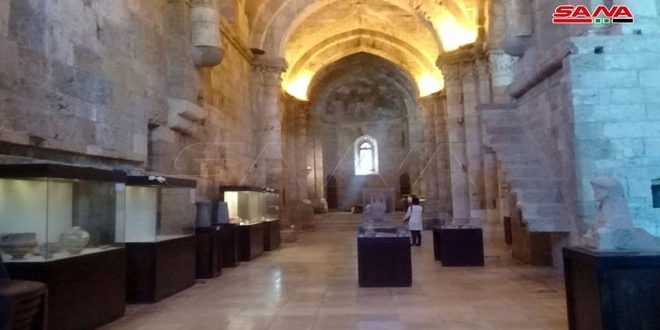Tartous Museum hosts a display of the most important antiquities and archaeological sites in the governorate
Tartous (ST): A number of researchers and specialists gave a presentation of the most important archaeological sites and discoveries in Tartous governorate within the symposium held by the General Directorate of Antiquities and Museums in cooperation with the Hungarian mission working in the Marqab Castle at Tartous Museum.
The symposium, which came under the title “Archaeological Findings in Tartous,” was opened by a speech by the Director-General of Antiquities and Museums, Mohammad Awad who said that Tartous owns important archaeological sites and preserving them is a collective responsibility.
Director of Antiquities and Museums in Tartous, Marwan Hassan, indicated that the symposium includes main themes, during which the lecturers present information about the sites and the latest archaeological discoveries in the governorate.
Balaj Majour, director of the Hungarian side in the joint Syrian-Hungarian mission explained that the mission has been working in Al-Marqab Castle since 2007 and achieved important results with the Syrian side, including the discovery of the largest painting in the castle church, which later turned into a mosque.
Dr. Hammam Saad, Director of Planning and Studies at the General Directorate of Museums and Antiquities, gave a lecture on the site of Amrit and its importance as a Phoenician city on the Syrian coast, and the archaeological elements that appeared in it since the beginning of works in the nineteenth century until now.
The curator of Tartous Museum, Seba Omran, said that conducting an archaeological activity at a historical archaeological site adds more value to the importance and position of the site, in addition to its contribution to expanding awareness among the younger generations of the importance of heritage and embodies the deep belonging to the roots.
K.Q.

